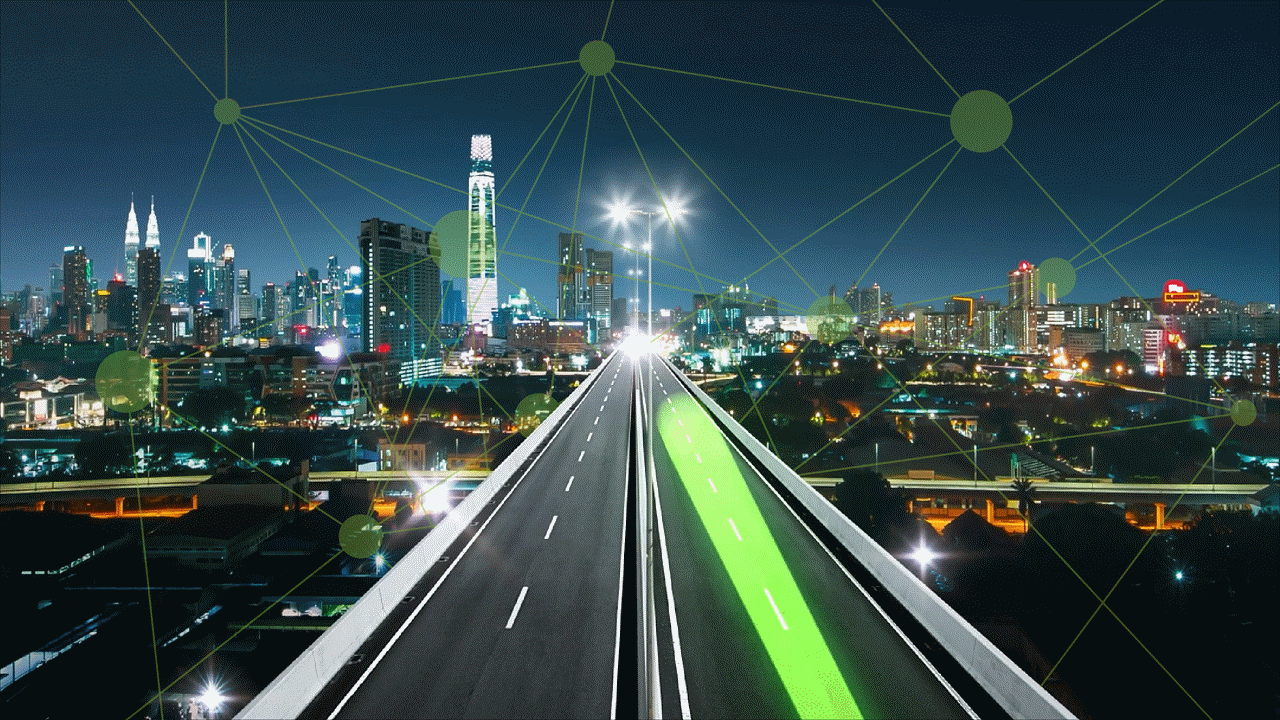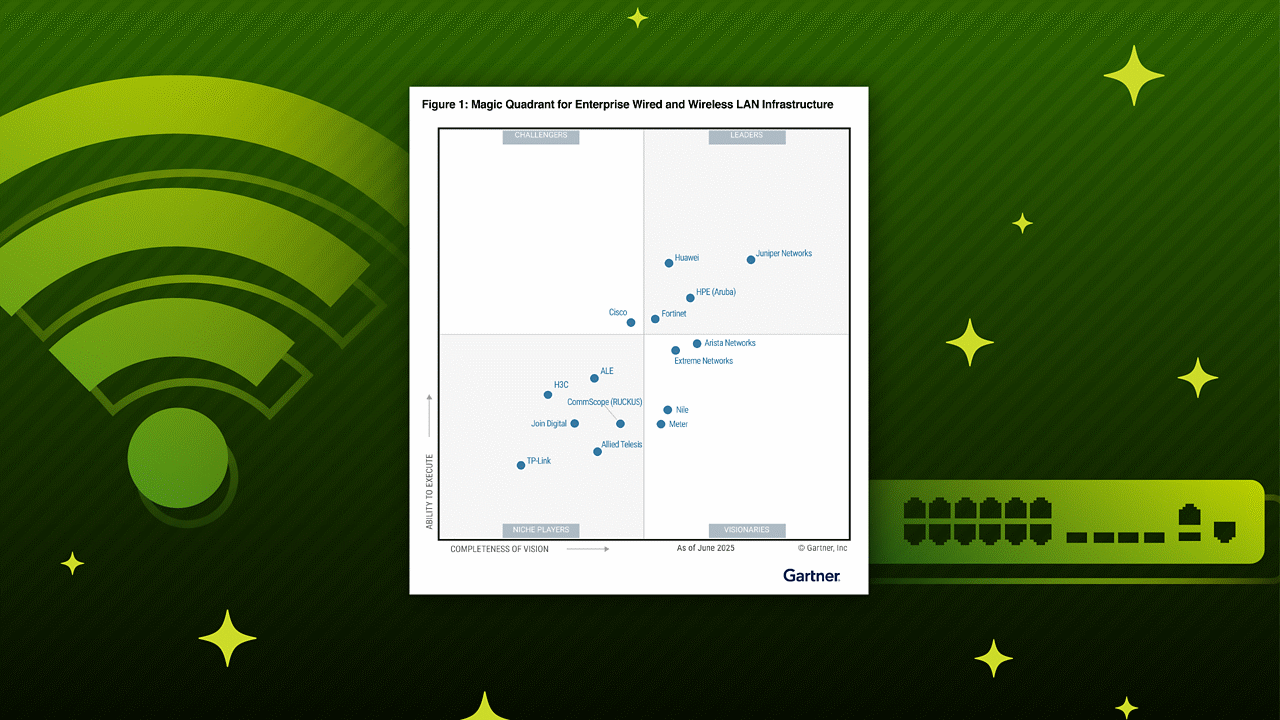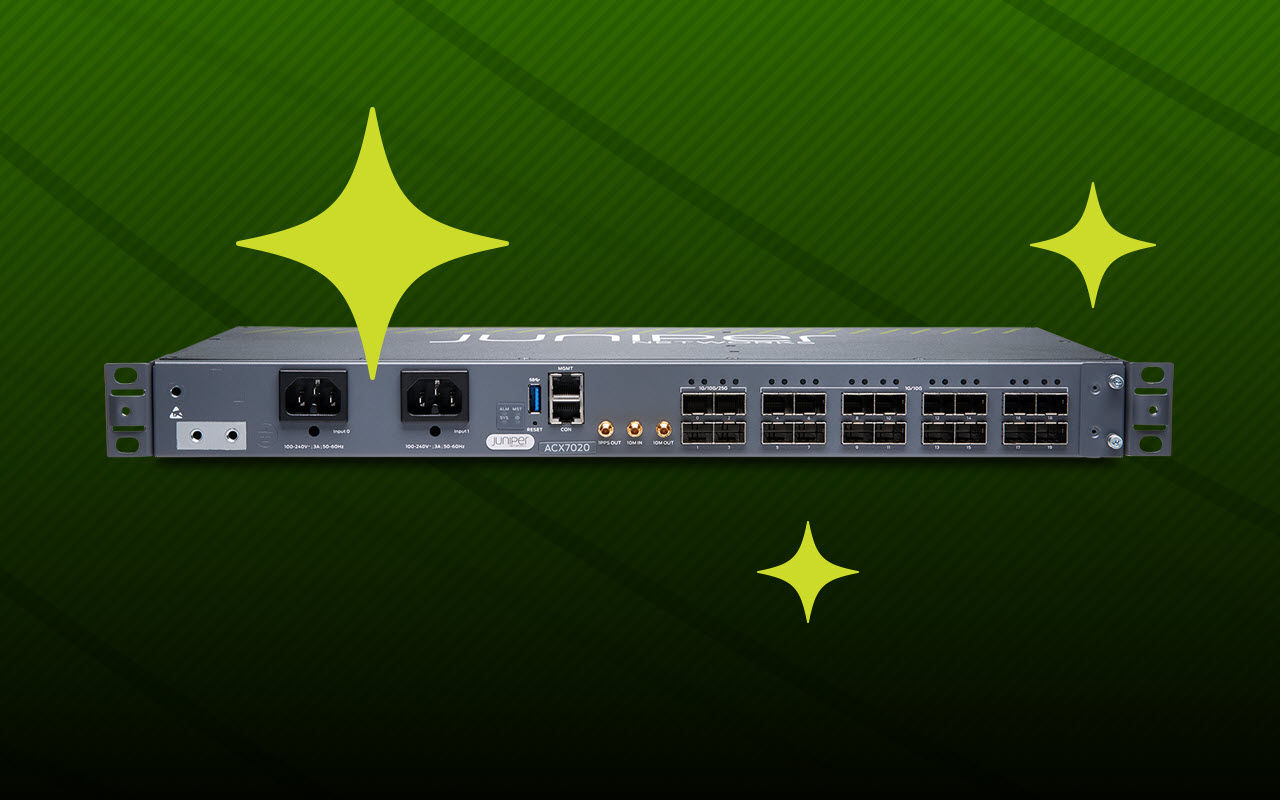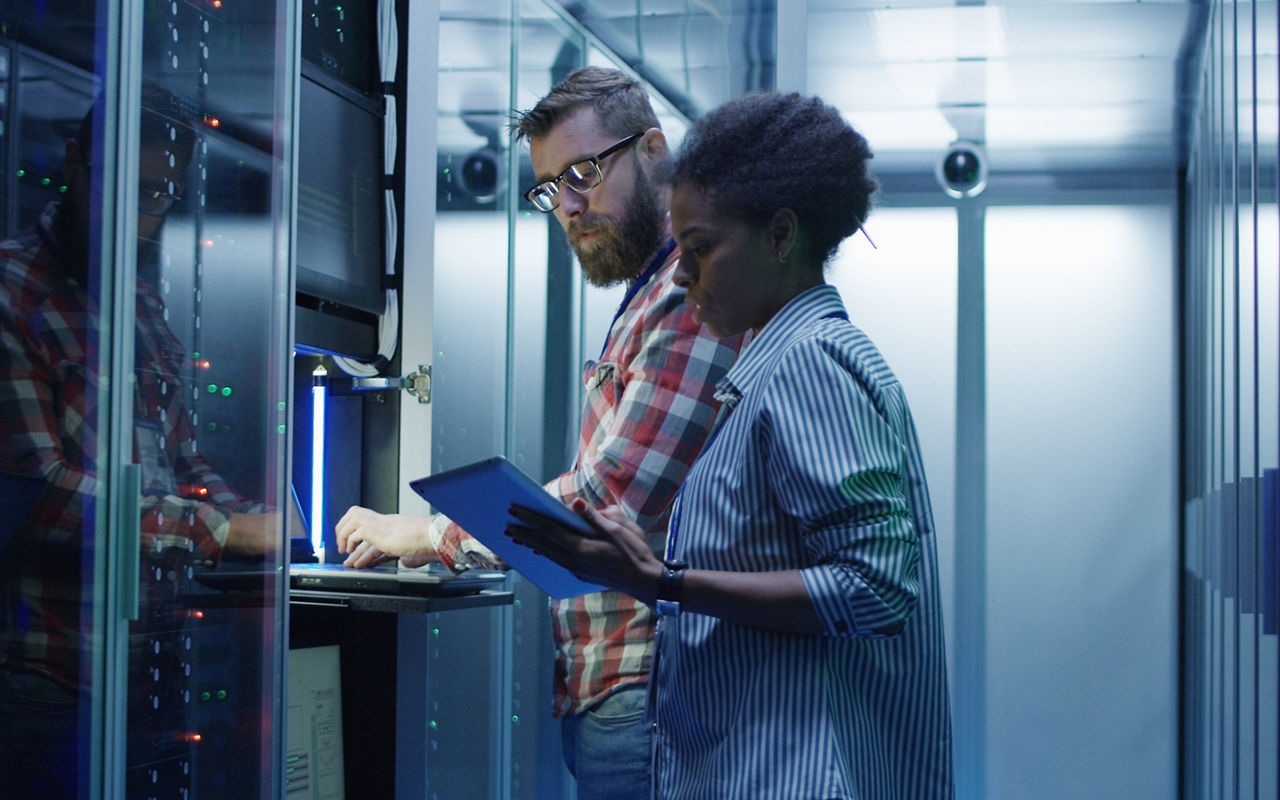What is a self-driving network?
A self-driving network is an advanced, artificial intelligence (AI)-driven network that can automatically optimize itself with minimal to no human intervention. By leveraging AI and machine learning (ML); high-quality, real-time data; and a secure and scalable cloud-based network architecture, it enhances reliability, security, and efficiency, dramatically reducing the complexity of traditional network management.
Much like self-driving cars—once considered science fiction—a self-driving network is getting closer to becoming a reality. Just as autonomous vehicles have evolved from manual operation to assisted driving and, ultimately, driverless operation, networks are following a similar trajectory. They are shifting from manual, reactive management to proactive, autonomous optimization, capable of self-configuration, self-optimization, and self-healing.
Why is a self-driving network needed?
Reliable connectivity isn’t just a luxury—it’s business-critical. Organizations need networks that deliver seamless, high-performing, and secure experiences at all times, across all use cases. Network resource constraints, including IT skills shortages, make manual network management unsustainable. At the same time, networks are becoming more complex and security threats are escalating. These combined pressures drive the need for AI and autonomous networking.
What are the benefits of a self-driving network?
A self-driving network transforms network operations by reducing complexity, improving security, and enhancing user experiences.
Enhanced efficiency
AI-driven workflow automation minimizes manual troubleshooting, allowing IT teams to focus on strategic initiatives rather than routine network maintenance.
Improved performance
By proactively detecting and resolving issues, an autonomous driving network improves reliability and reduces downtime.
Better scalability
Onboarding and configuration time is greatly reduced by using autoprovisioning to dynamically name devices, assign them to sites, and apply device configuration profiles.
Stronger security
Security is also strengthened, as AI algorithms can quickly identify and mitigate threats before they impact operations.
Improved user experiences
End-to-end automation ensures that networks dynamically adapt to network traffic demands, delivering exceptional performance for end users.
By embracing a self-driving network, organizations gain a future-ready infrastructure that is more scalable, secure, and resilient.
How does a self-driving network work?
A self-driving network utilizes advanced AI and machine learning (ML) algorithms, powered by vast amounts of high-quality data and a scalable, secure, cloud-based architecture. It uses real-time alerts, classifiers, and prioritization mechanisms to identify issues, recommend solutions, and execute fixes. Over time, as AI capabilities grow more advanced and accurate, the network becomes increasingly capable of managing itself with minimal to no human intervention.
How it works in practice:
- Learning phase: The network monitors itself and builds a baseline of normal network behavior
- Decision phase: Using AI models, the network predicts potential issues and makes decisions about how to respond
- Action phase: The network automatically applies those decisions to resolve issues
What are the stages of a self-driving network?
A self-driving network evolves over five stages of sophistication. As businesses embrace each new level of network automation, they unlock more reliable, secure, and agile networks that are adaptive to evolving demands in real time:
- Data collection: High-quality data from the network is gathered in real time to provide the necessary inputs for AI and ML algorithms
- Insights: AI-powered analytics process this network data to generate insights, identifying performance trends, potential disruptions, or inefficiencies within the network
- Recommendations: Based on these insights, the network generates recommendations for actions to optimize performance or resolve issues. These suggestions are prioritized to address the most pressing concerns
- Controlled self-driving: The network begins to autonomously make adjustments, but IT maintains oversight. While it may take corrective actions, IT can still intervene if necessary to ensure the network operates as expected
- Full self-driving: The AI can take full control, making real-time adjustments and optimizations without requiring human intervention. IT teams shift focus to more strategic activities as the network becomes capable of handling routine management tasks
What are the key capabilities of a self-driving network?
The key capabilities of an autonomous driving network include:
- Autonomous operations: Continuously monitors network and application health across the ecosystem, identifying and addressing issues in real time without manual intervention
- Predictive analytics and assurance: Using AI and ML, the network anticipates failures or performance degradations before they impact end users
- Self-configuration: The network can automatically configure new services, devices, and applications without manual setup
- Self-healing: Automatically diagnoses and remediates problems, minimizing poor performance or downtime
- Self-optimization: The network constantly monitors performance and adjusts itself for optimal speed, reliability, and efficiency, such as re-routing around congestion or failure
- Self-monitoring: It continuously tracks data flow, device performance, and overall network health to detect unusual patterns that may indicate performance issues
- Adaptive security: The network identifies security threats like malware, phishing, or denial-of-service (DoS) attacks and takes corrective action
- Intent-based networking (IBN): When operators describe the business outcomes they wish to accomplish, the network converts those objectives into the configuration necessary to achieve them
- Policy enforcement: The network enforces security, access control, and quality-of-service (QoS) policies automatically across all connected devices
How do users gain trust in self-driving networks?
As a network becomes more autonomous, IT teams must build trust in the AI’s decision-making. This trust is cultivated over time through consistent performance and transparency. As the AI continuously learns and improves, it should demonstrate its ability to make accurate assessments and drive network optimizations across the ecosystem, ultimately enhancing overall efficiency. This ongoing development fosters confidence in its efficacy.
To further solidify trust, vendors should provide transparency into the AI’s decision-making processes, often referred to as explainable AI (XAI). By detailing the technologies driving these decisions—such as reinforcement learning, natural language processing, and decision trees—vendors help IT teams understand how the AI arrives at its conclusions. This transparency provides clarity and reassurance, ensuring that the actions taken by the network are both reliable and beneficial.
Will a self-driving network eliminate the need for IT staff?
A self-driving network surfaces insights that IT teams might miss, quickly identifies root causes to save hours of troubleshooting, and self-heals to ensure optimal performance. The result is a network that works smarter so IT teams can focus on innovation rather than firefighting.
While a self-driving network won't eliminate IT jobs entirely, it will change the nature of IT roles. While some routine tasks may be automated, the need for skilled professionals to design, manage, and oversee these networks will remain crucial. It will increase demand for higher-level skills like AI integration, big data analytics, and strategic planning.
Juniper and the Self-Driving Network
With Mist AI and Marvis Virtual Network Assistant (VNA), Juniper is driving a journey to the Self-Driving Network™. Together, Mist AI and Marvis streamline operations, enhance security, and deliver exceptional user experiences while reducing operational complexity.
Mist AI continuously collects rich telemetry data from network devices and applications in real time, aggregates it within a secure and scalable microservices cloud, and applies years of AI/ML training to deliver actionable insights, proactive recommendations, and self-healing network capabilities. This approach optimizes performance, streamlines network operations, and reduces the burden on IT teams.
Leveraging over a decade of AI training and development, Mist AI has steadily advanced in efficacy and intelligence, progressing through key stages of network automation: data collection, insights generation, actionable recommendations, self-healing capabilities, and, eventually, fully autonomous networking. As AI capabilities continue to evolve, Mist AI empowers IT teams by reducing manual troubleshooting, allowing the network to make data-driven decisions and take autonomous actions. This ongoing evolution helps businesses stay ahead of performance issues, maintain optimal network health, and create a more resilient, secure, and efficient network infrastructure.
Marvis VNA, driven by Mist AI, acts as a valuable extension of the IT team, identifying critical, performance-impacting events and providing recommended remediation steps through Marvis Actions. Using Marvis doesn’t require specialized knowledge or skills because it relies on a conversational interface that leverages natural language processing and understanding (NLP and NLU), large language models (LLM), and generative AI (GenAI) for intuitive interactions.
FAQs
Where can I learn more about a journey to the Self-Driving Network?
Wherever you are in your digital transformation, there are multiple ways to learn more about the five stages of a journey to the Self-Driving Network, including:






















